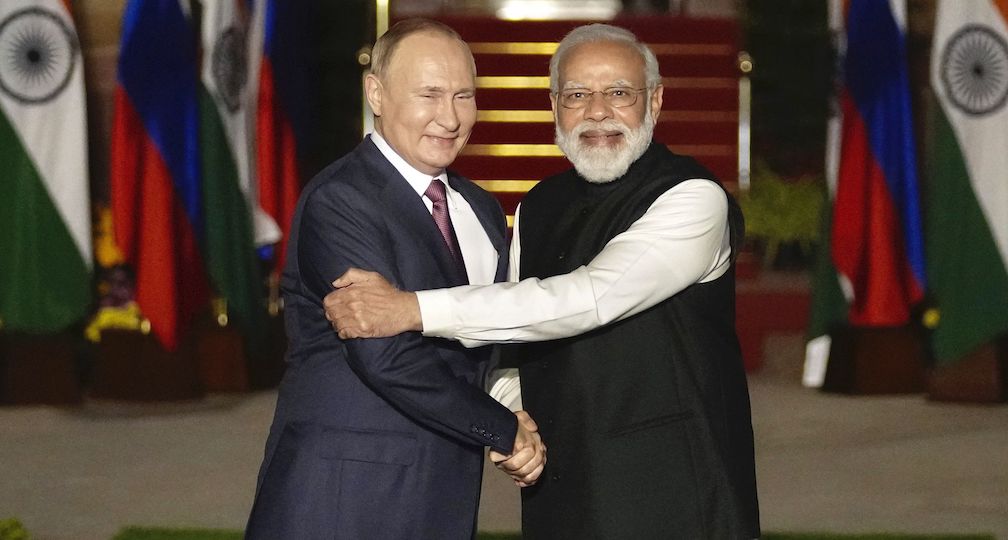Cold War to Ukraine : The relationship between India and Russia
Politics
CREATED
04 Apr 2022
www.syne.com/story/cold-war-to-ukraine-t...
India’s friendship with Russia, the old Soviet Union became official in 1971 when Indira Gandhi was the Prime Minister. The two countries signed a Treaty of Peace, Friendship and Co-operation. The same year, the Soviets backed India in a war that ultimately led to the independence of Bangladesh, the old East Pakistan.
Around this time, the US was also pursuing its opening to China and Pakistan. In 1971, American President Richard Nixon and his assistant for NSA Henry Kissinger described Indira Gandhi as a bitch and Indians as Bastards. This information was part of the declassified documents on South Asia 1969-1972. However, the US help to Pakistan and China played a real good opportunity for India and the USSR as India saw a common interest in balancing against China.
India forged a relationship with the Soviet Union during the Cold War. That has carried over into the present day because of mutual interest and nostalgia, but the biggest reason might be defense. India’s arsenal is largely Soviet- or Russian-made; various analysts put the amount anywhere between60-80%. And India needs its military to counter what it sees as the biggest threat in its region: China’s rise.
This friendship pact with Russia was about as close to an alliance as India was comfortable enough to get at the time, experts said. During the Cold War, India practiced a foreign policy of non-alignment, an approach embraced by many newly independent states following decolonization after World War II.
The Soviet Union and the US were battling for spheres of influence in these countries, so non-aligned countries sought to stay out of the superpower conflict and assert their right to independently run their foreign and domestic policy. India saw itself as a leader in this movement, but that also didn’t preclude it from swaying toward Moscow when it made sense for India’s own interests.
The Soviet Union and India saw a benefit in relying on each other to counter China and a possible US-China partnership. But India got another perk: Soviet weaponry. From the 1970s onward, India built up its military with Soviet, and later Russian, arms and equipment. Even today, the majority of India’s weaponry is of Soviet or Russian origin. Since 2010, Russia makes up two-thirds of India’s arms imports. India remains Russias biggest arms importer till today.
As the relationship between the US and India grew in the past few decades, so, too, did defense cooperation. But it’s nowhere near the amount Russia provides. It’s also not as simple as just swapping out Russian stuff with new, US-made stuff. Even as India weans itself off Russian arms, it is a slow and long-term process. And slow and long-term processes can feel very risky when India worries about protecting itself in its own neighbourhood, from China and Pakistan.
India recently purchased S-400, a Russian missile defense system, which makes it subject to US sanctions. India wants to balance its partnerships, in the world and its region, and it sees value in an empowered Russia, especially as a way to prevent Chinese hegemony in the region. Russia has backed up India on the global stage, from the start of their friendship, in 1971, to the present day.

On March 2 this year, the United Nations General Assembly voted, on a resolution condemning Russia for invading Ukraine. India, the world’s largest democracy, abstained from the vote. It wasn’t an outright condemnation of Russia’s actions, but it also wasn’t a declaration of support.
Russian President Putin and current Prime Minister Modi have met more than a dozen times, the last was in December 2021 when Putin travelled to New Delhi. Putin himself described India as a great power, a friendly nation and a time-tested friend.




View Comments